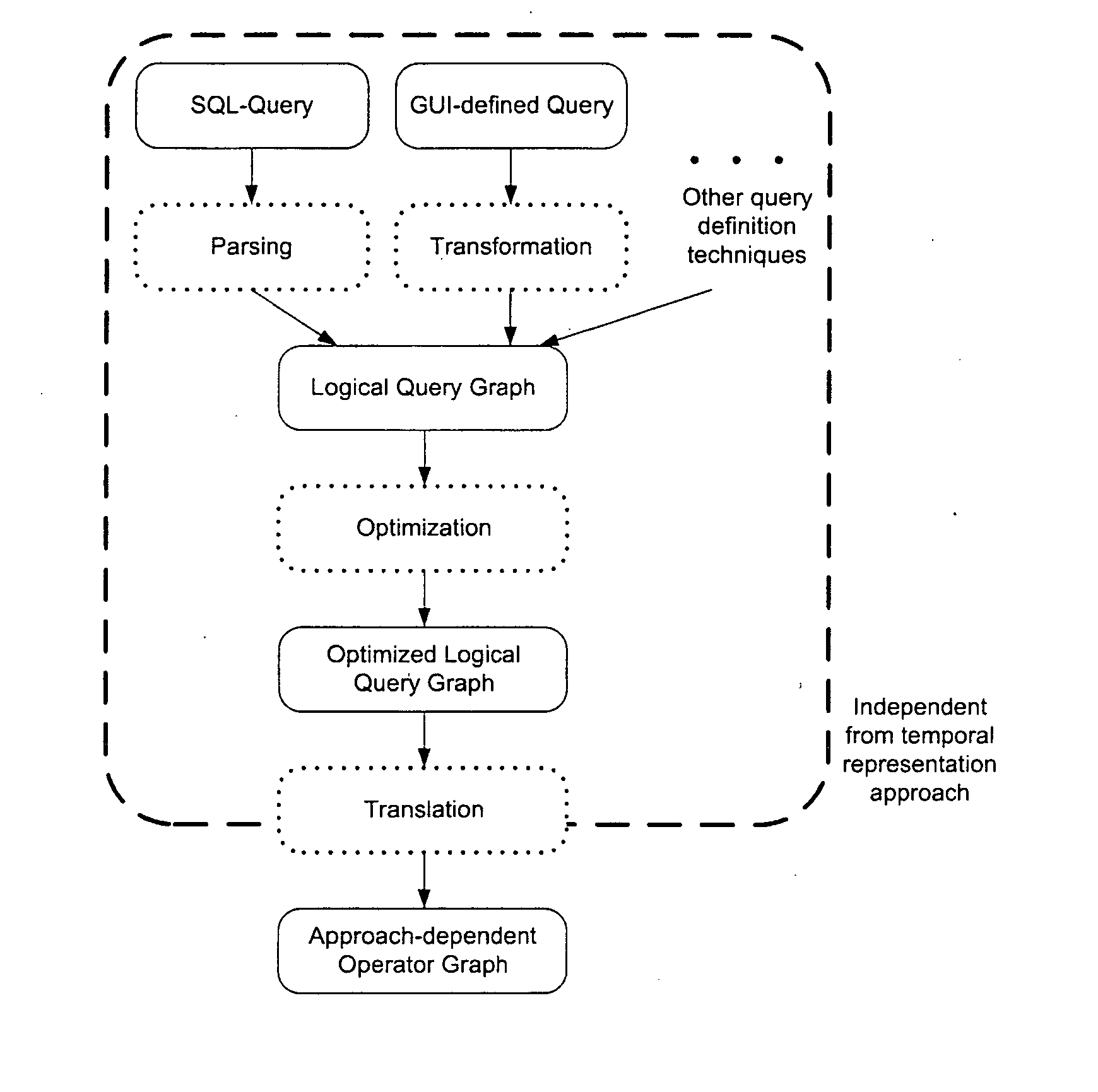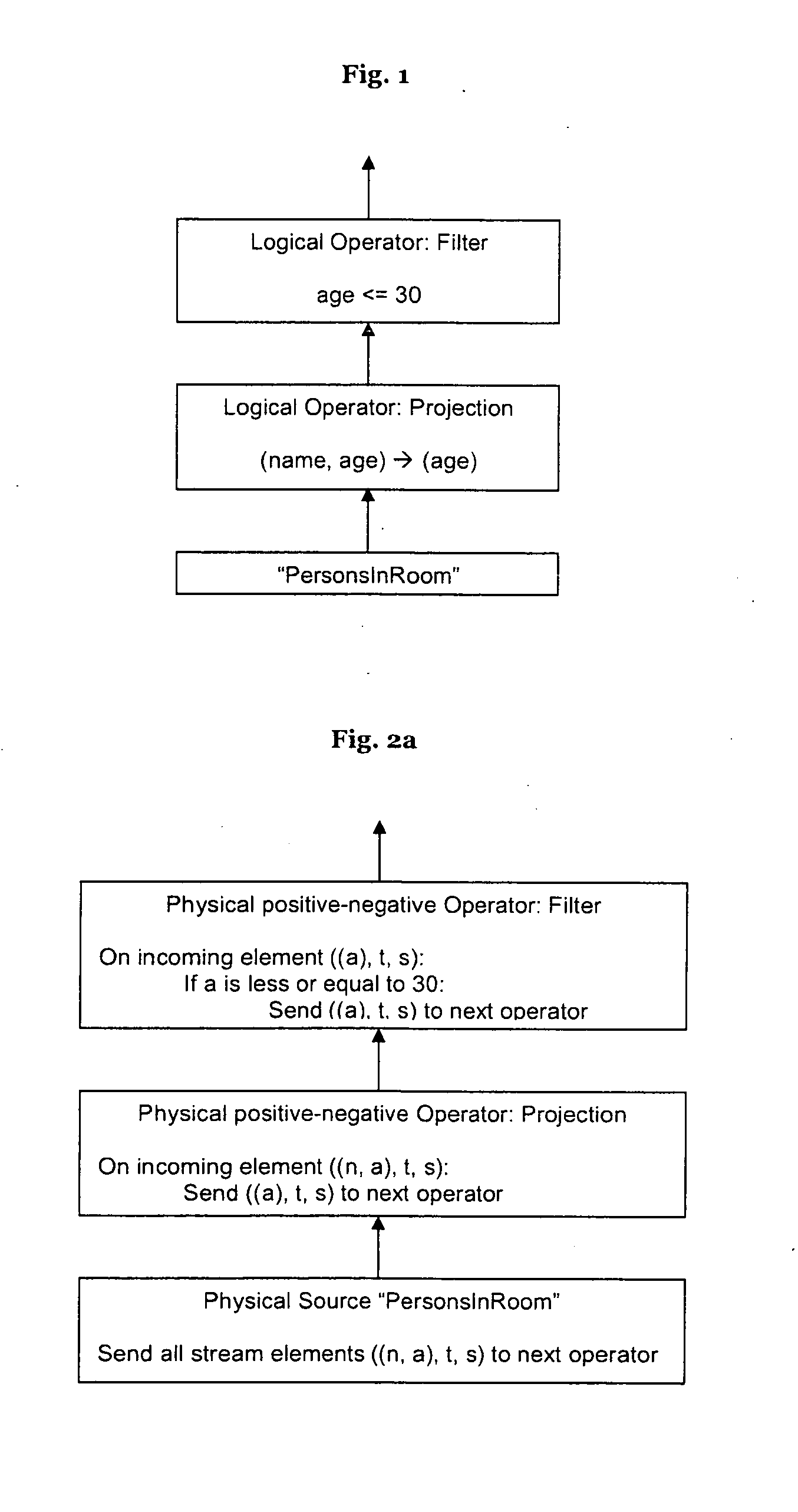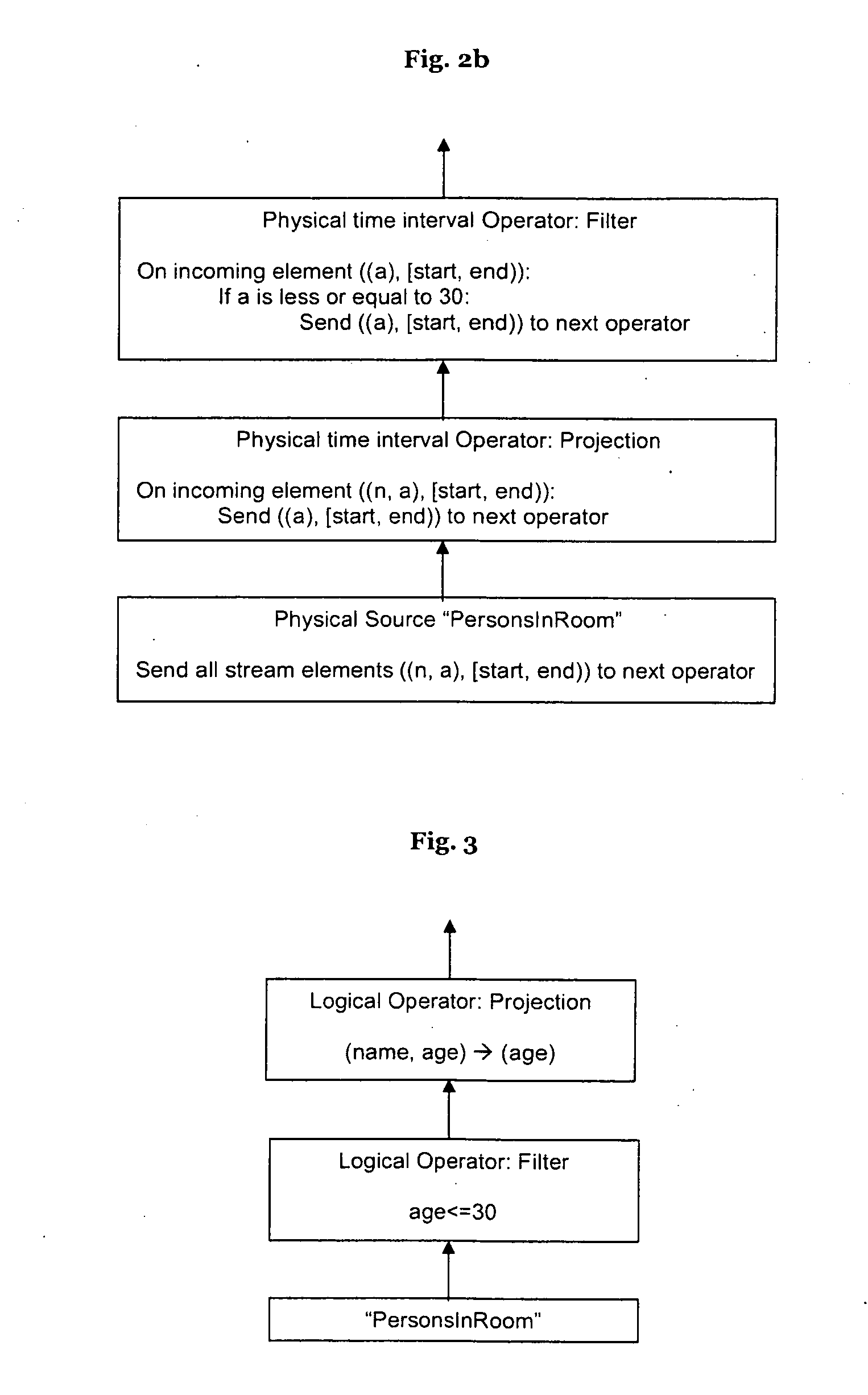CEP engine and method for processing CEP queries
a technology of complex event processing and engine, applied in the field of complex event processing (cep) engine and a processing method, can solve the problems of increasing the liveliness of the cep engine, affecting the performance of the engine, etc., and achieves the effect of reducing implementation effort and facilitating the interoperability of all data stream representations
- Summary
- Abstract
- Description
- Claims
- Application Information
AI Technical Summary
Benefits of technology
Problems solved by technology
Method used
Image
Examples
Embodiment Construction
[0042]In the following, a presently preferred embodiment of the invention is described with respect to a method for (pre-)processing CEP queries over data streams as schematically shown in FIG. 1, which is performed by a CEP engine 1. As can be seen, the CEP engine 1 comprises a parser 100, an optional optimizer 200 and a translator 300. The CEP engine 1 is adapted for receiving one or more CEP queries 10. The parser 100 parses a received CEP query 10 into a logical query graph 20. The logical query graph 20 is in the exemplary embodiment of FIG. 1 optimized by the optimizer 200 to produce an optimized logical query graph 20′. The optimized logical query graph 20′ and / or the logical query graph 20 are the input of the translator 300, which produces a physical query plan 30 that is finally executable to yield the query results from one or more data streams in accordance with the CEP query 10. While the embodiment shown in FIG. 1 focuses on the components for pre-processing a given CE...
PUM
 Login to View More
Login to View More Abstract
Description
Claims
Application Information
 Login to View More
Login to View More - R&D
- Intellectual Property
- Life Sciences
- Materials
- Tech Scout
- Unparalleled Data Quality
- Higher Quality Content
- 60% Fewer Hallucinations
Browse by: Latest US Patents, China's latest patents, Technical Efficacy Thesaurus, Application Domain, Technology Topic, Popular Technical Reports.
© 2025 PatSnap. All rights reserved.Legal|Privacy policy|Modern Slavery Act Transparency Statement|Sitemap|About US| Contact US: help@patsnap.com



